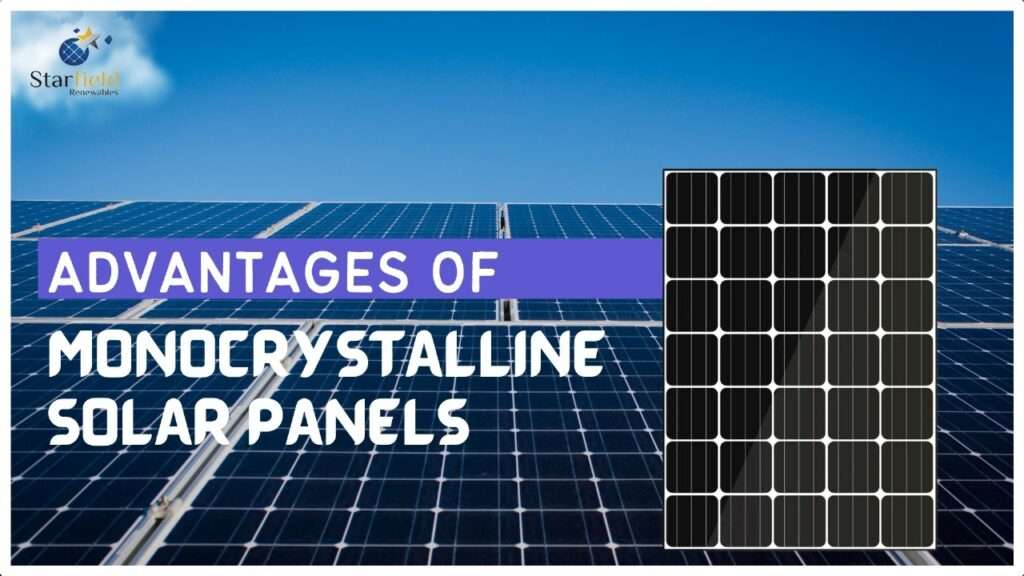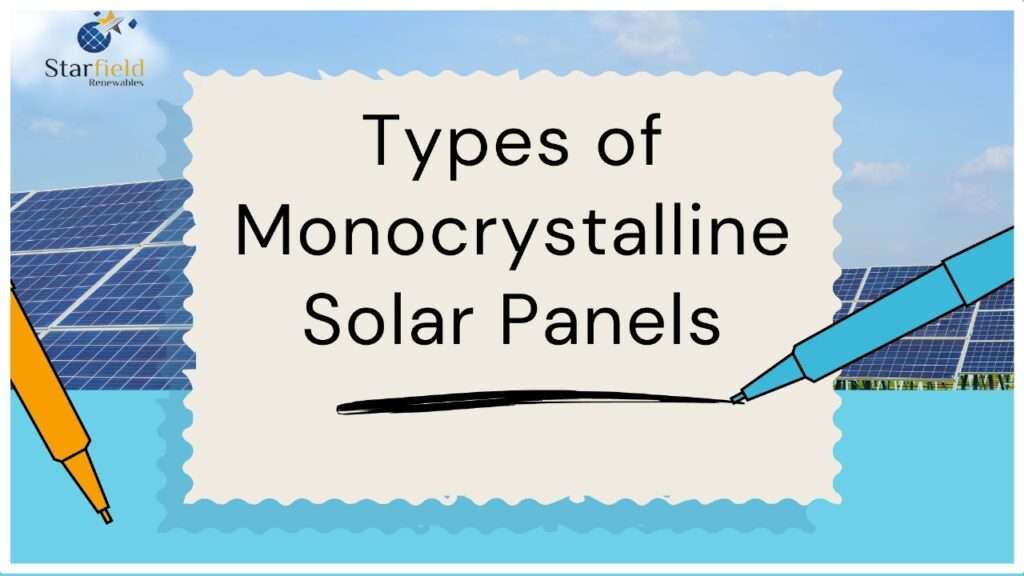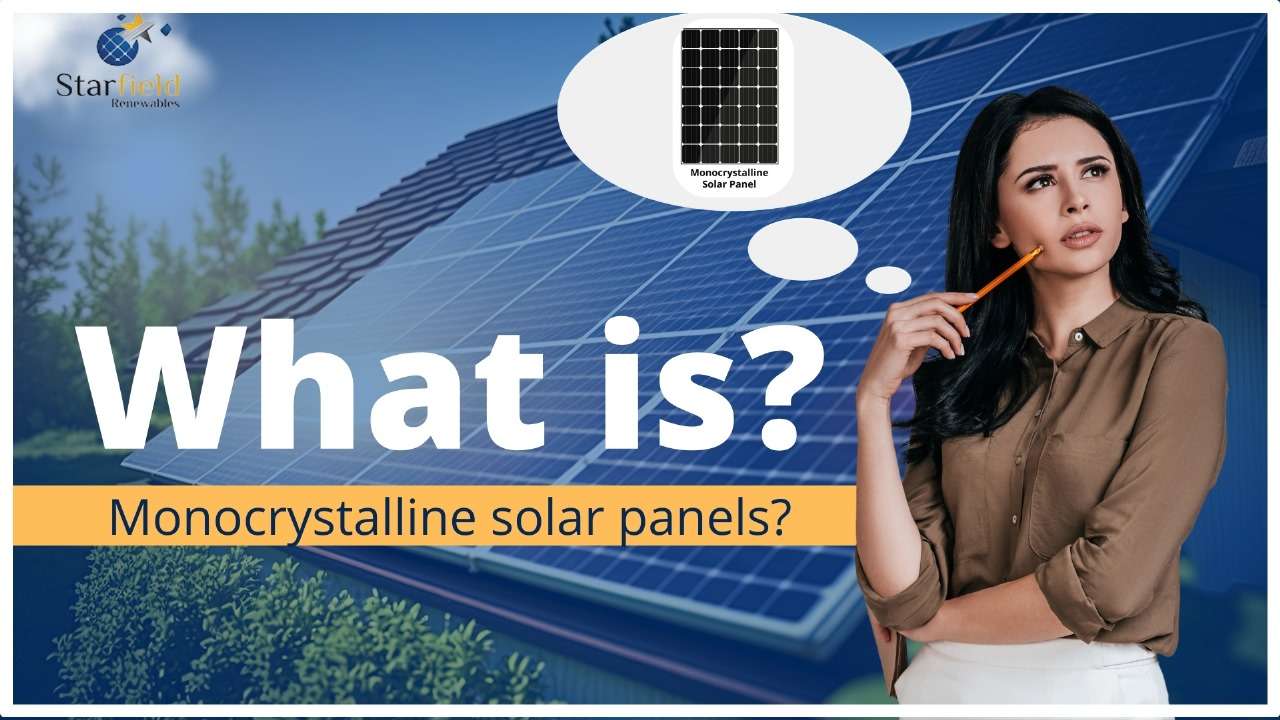We will be discussing monocrystalline solar panels. They are an extremely popular choice for people who wish to maximize the energy of the sun. Although monocrystalline solar panels are well-known due to their superior effectiveness and appealing style, among the broad variety of monocrystalline panels various types are suited to different requirements. In this article, we’ll take an in-depth look at the different types that monocrystalline panels can offer. what they do and what makes them stand different from other solar technology.
What is Monocrystalline Solar Panels?
Monocrystalline solar panels can be made using the use of single crystals that are made from silicon. This method is very efficient in converting sunlight into electricity. It is because crystals possess a consistent design, which lets light be absorbed better. In addition, monocrystalline panels have higher efficiency than polycrystalline panels. They can be distinguished by their uniform, dark shade along with their seamless edges. They’re designed to be used within areas that have limited space.
The Advantages of Monocrystalline Solar Panels
Solar panels made of monocrystalline are renowned for several advantages.

- Superior Efficiency: They usually offer the greatest efficiency when compared to other types made of solar panels. The single crystal structure of the panels allows electrons to circulate more freely which improves the creation of electricity.
- Durability: The durability of monocrystalline panels is that they come with durability and are designed to be utilized for more than twenty-five years. That makes them an excellent investment.
- High-Light Performance: These panels perform better than other panels when there are poor lighting conditions. They’re suitable for areas with less sunlight or clouds.
- Monocrystalline panels are low maintenance: They need minimal maintenance. They are a stress-free investment.
- Aesthetics: Most monocrystalline panels have a contemporary and elegant appearance, which makes them a stylish option for homes of all kinds.
What is the Monocrystalline Solar Panel’s function?
Monocrystalline solar panels work using an approach known as photovoltaic. When light hits the cells that produce photovoltaic, they produce an electric field through an intricate process that is managed by the formula P (power) is equal to V (voltage) (current) x (intensity) (current).
When sunlight strikes this silicon crystal, it activates the electrons to generate electricity. When sunlight is particularly strong this cell generates an increase in energy. However, PV panels don’t need sunshine to function or even produce electric power on cloudy days.
Monocrystalline PV panels comprise a single crystal, which offers an easy pathway for electrons. The result is more efficient energy conversion.
Different Types of Monocrystalline Solar Panels
There is a variety of options for monocrystalline solar panels, each designed to satisfy particular specifications. The fundamental design of the monocrystalline solar panel is similar, but there are some variations based on the method of manufacture utilized. There are three main kinds that monocrystalline solar panels are.

- Black Silicon: These panels are black in their finish which can increase effectiveness and light absorption. The black colour is created by etching chemically.
- Half-Cut Cells: Half-cut cells are monocrystalline cells that have been cut into half. This minimizes the possibility of shading and improves efficacy, especially in areas where there is partial shading.
- Bifacial Panels: Bifacial panels absorb sunlight on both sides, thereby increasing energy generation. They’re usually used for areas that have high reflections, for example, the roofs that are covered in snow or desert areas.
- Perovskite-Based Panels: Perovskite-based panels are developing Monocrystalline perovskite panels made of the material showing the potential for efficacy and value. They could be a viable alternative to conventional silicon-based panels.
Selecting the Best Monocrystalline Solar Panels
If you are aware of the many types of monocrystalline solar panels and their benefits, you can make a smart decision and use solar energy to cut down your energy bills and help create an environmentally sustainable future.
- Cost and. performance: While monocrystalline panels cost more than polycrystalline ones, their superior effectiveness often is more than justifies the expense.
- Size and Space Requirements Based on the area available for installation, particular varieties of monocrystalline panels might work better.
- Installation complexity: Certain panels, including bifacial panels, could require more intricate installation that can result in higher costs.
Practical Applications to Monocrystalline Solar Panels
Monocrystalline panels can be used in a variety of ways and can be utilized in many different applications:

- Residence Solar Energy Solutions: These panels are great for those who wish to cut their power costs and also be more eco-sustainable.
- Industrial and Commercial Applications: Installations of large scale benefit from the performance and endurance of monocrystalline panels. They could result in significant savings on energy as time passes.
Cost-Considerations of Monocrystalline Solar Panels
The initial cost for monocrystalline solar panels could be greater than the other varieties of panels but the advantages in time will usually exceed the initial expense. A higher efficiency for monocrystalline solar panels means that fewer panels will be required to produce the same amount of power, which can reduce costs for installation in the long term. Furthermore, the long-lasting characteristic of monocrystalline panels can provide the best return on investment.
Maintaining and Longevity of Monocrystalline Solar Panels
Monocrystalline solar panels need minimal maintenance. Regular cleaning and periodic inspection are essential to ensure that they function at their highest. They are often backed by warranties that last for more than 25 years they are made to last and can withstand all kinds of climate circumstances.
FAQs About Monocrystalline Panel
1. Do monocrystalline solar cells make sense?
Monocrystalline panels can be a good investment due to their efficiency and longevity.
2. How long can monocrystalline panels be used?
With proper care, these panels can last up to 25 years.
3. Monocrystalline panels can be used in rainy or cloudy conditions?
They are effective in both cloudy and low-light conditions.
4. What’s the difference between polycrystalline and monocrystalline panels?
On the other hand, polycrystalline panels are not as efficient. They are made up of many pieces of silicon and their structure is monocrystalline.
5. What is the cost of monocrystalline solar cells?
The higher cost of these panels is often justified by their superior efficiency and durability.
Conclusion: Monocrystalline Solar Panel
Solar panels made of monocrystalline crystals are the best choice when it comes to residential or commercial energy solutions. These panels are pushing the limits of solar efficiency with advancements such as PERC technology, half-cell and bifacial. Solar panels with monocrystalline technology are more efficient and costlier than those made of polycrystalline.

